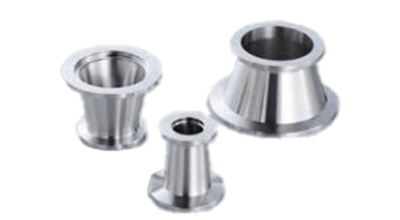What Is a Conversion Fitting?

A conversion fitting is a type of fitting that connects, redirects, and branches pipes of different types.
Pipes are made of different materials, such as alloy steel pipe, stainless steel pipe, aluminum pipe, copper pipe, polyethylene pipe, and each material is used according to the type of fluid to be transported, the purpose of transport, and the environment surrounding the pipe. However, conversion fittings are used in situations such as when pipes of different materials are used inside and outside a building, or when different types of pipes are connected to existing pipes during renovation work, etc.
In addition, there are situations where different types of threads are connected using the screw-in method, which is one of the connection methods of fittings. Fittings used in such situations are specifically referred to as screw conversion fittings.
Uses of Conversion Fittings
Conversion fittings are used to connect pipes of different materials or with different types of threads in piping used to transport gases, liquids, etc.
Conversion fittings are used to connect dissimilar pipes in a wide range of fields, including water supply facilities, hot water supply facilities, drainage pipes, sewage pipes, ventilation pipes, gas pipes, circulating fluid temperature control facilities, fire prevention pipes, vacuum pipes, agricultural water pipes, and chemical plant pipes.
In particular, copper pipes with strong antibacterial properties have long been used in water supply and hot water facilities, but in recent years, stainless steel and polyethylene pipes are often used, and conversion fittings are increasingly being used to connect existing copper pipes.
Characteristics of Conversion Fittings
When using conversion fittings to connect pipes of different materials, especially when connecting pipes of different metals, it is necessary to consider corrosion caused by contact between the different metals.
When metals with different ionization tendencies come into contact with each other in an electrolyte such as water, a potential difference is created between them, with the base metal with the higher ionization tendency becoming the anode and the noble metal with the lower ionization tendency becoming the cathode, forming a battery. Metal ions with a positive charge flow out from the anode side of the battery, and the anode side (base metal side) is corroded. This phenomenon is called dissimilar metal contact corrosion (galvanic corrosion).
For example, when connecting stainless steel and copper pipes, there is almost no potential difference between the two types of piping because they have the same ionization tendency. Therefore, there is no problem even if stainless steel and copper pipes are in direct contact.
On the other hand, when stainless steel and brass pipes are connected, the zinc in the brass has a high ionization tendency, so connecting these two types of piping forms a battery due to the potential difference between them, causing galvanic corrosion of the brass.
To prevent this, conversion fittings must be electrically insulated. Forms of insulation include the flange type with insulating bolts, the insulated union type, and the screw-in type with insulating material attached to the threaded part.